January birdsong (needs full volume)
While for Thomas Hardy a bleak winter’s day was momentarily enlivened by the ‘ecstatic caroling’ of a thrush, for me it was the soft thump of nesting blue tits animating the tiny birdhouse in my garden, incongruous with the freshly settled snow.
But then again, snow itself is known to fall out of sync with the seasonal rhythms of life, as a few years ago in the same garden:
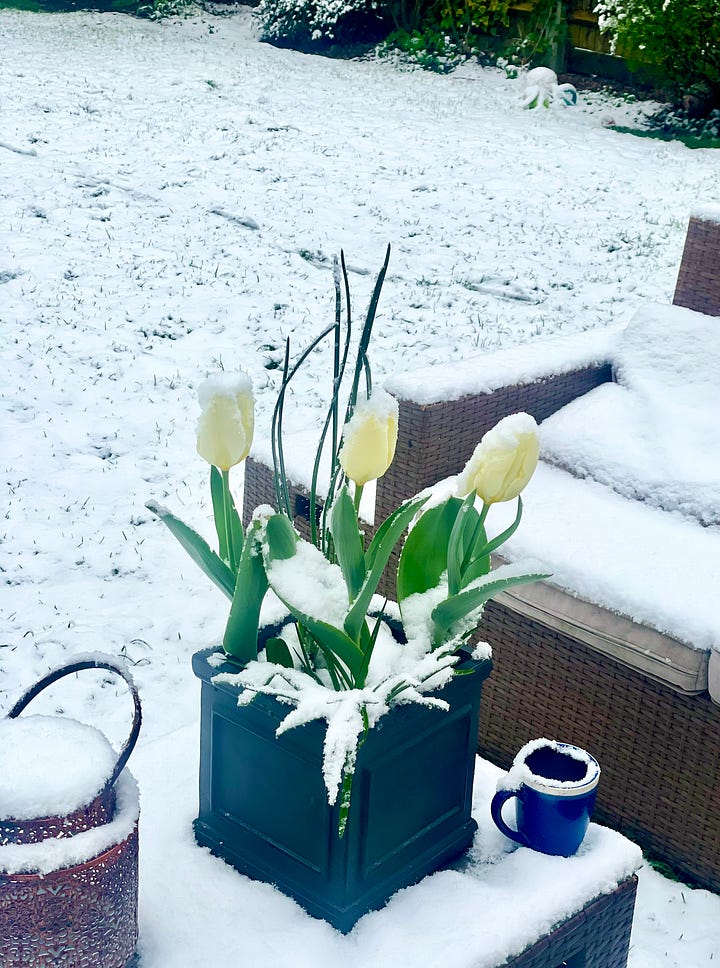
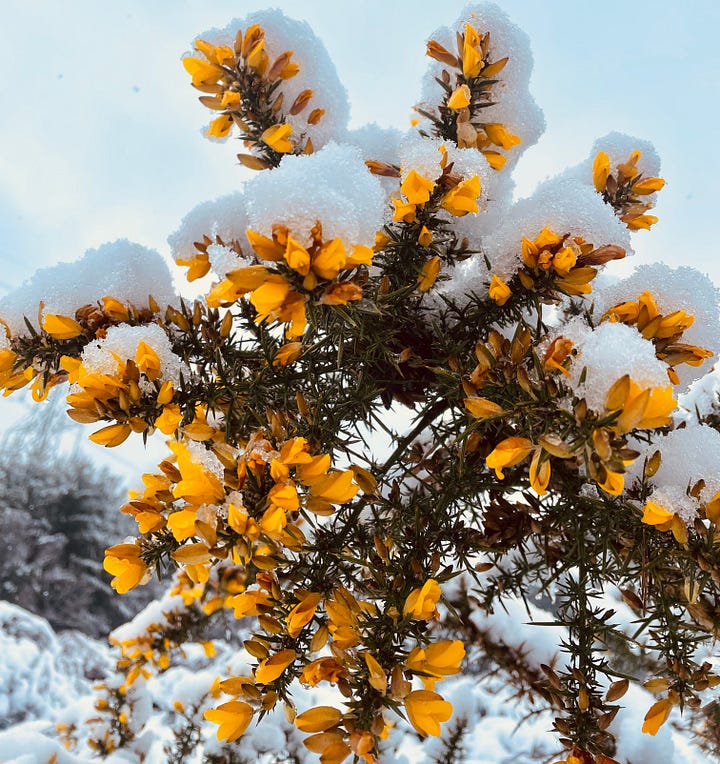
…or, allegedly, in the heat of August 358 AD on the Esquiline hill in Rome: wasn’t the basilica Our Lady of the Snows built on the spot where a moment of unexpected snow, anticipated a vision of the Virgin still celebrated by Italians today? A mere ten days away from the Ascension feast itself.
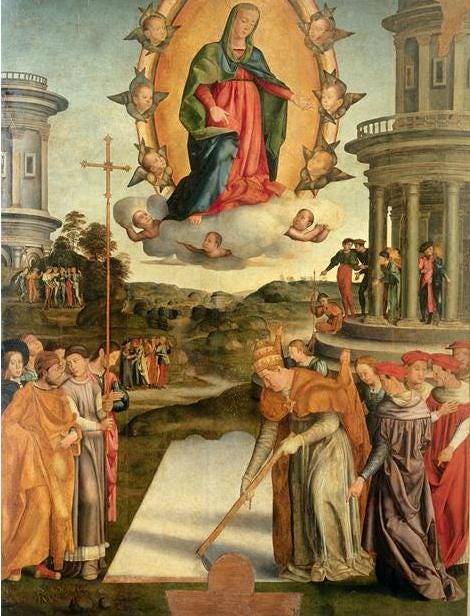
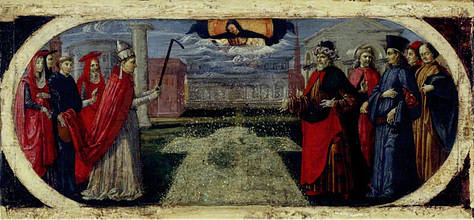
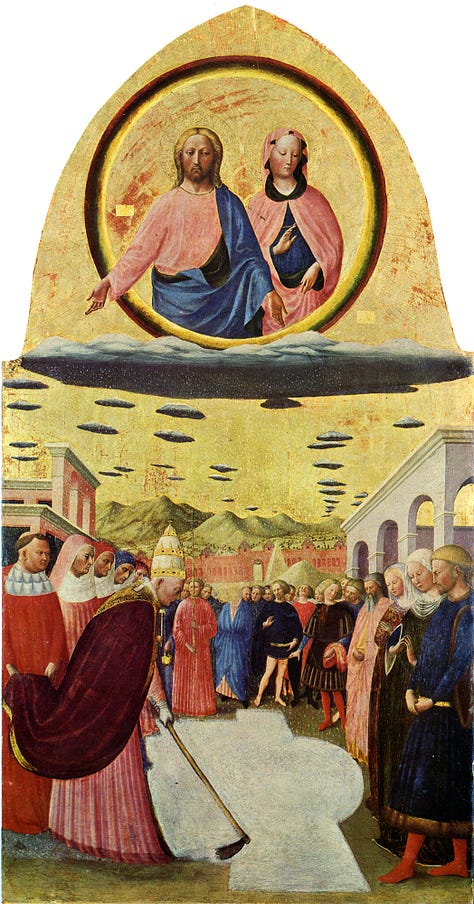
Back in the garden, the avian fervour for new life only serves as reminder that we’re still in January: it’s too cold even for snowdrops.
Yet the current hibernating bareness of trees is liberating: views of variously moody skies have become accessible and cleansed, there is room for new foliage. Even though I stopped replenishing the bird feeders when the cat crunched the third blue tit of last summer, the smallest of colourful local birds still come to pop on -and in-and out- of naked branches: goldfinches and siskins, long tailed tits and blue tits, robins, redwings, sparrows, bramblings, dunnocks, nuthatches, goldcrests… (endearingly, the goldcrest is the tiniest European bird, at 4-6 grams).
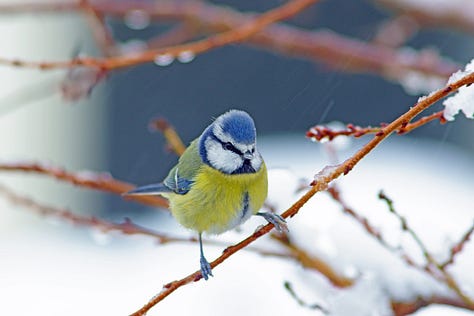
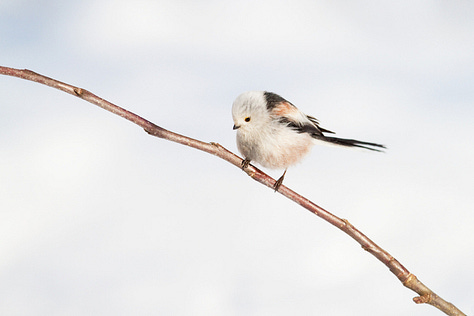
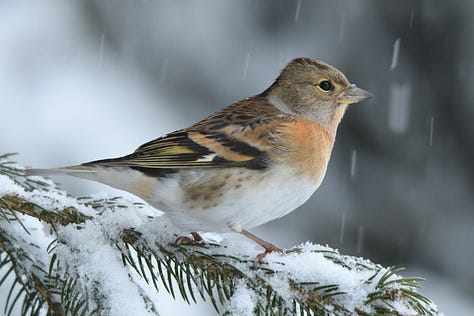
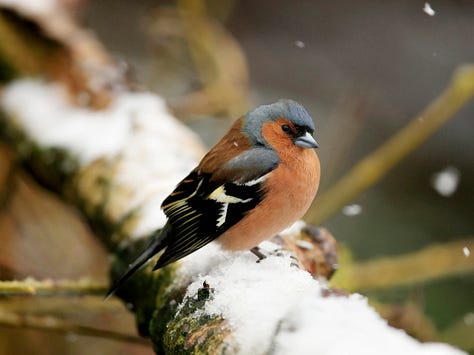

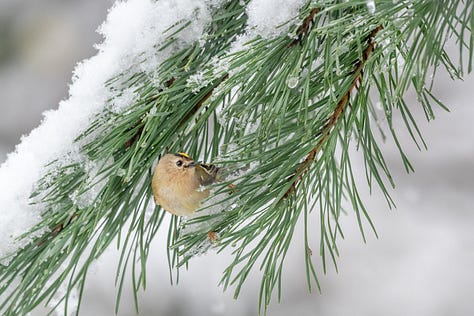
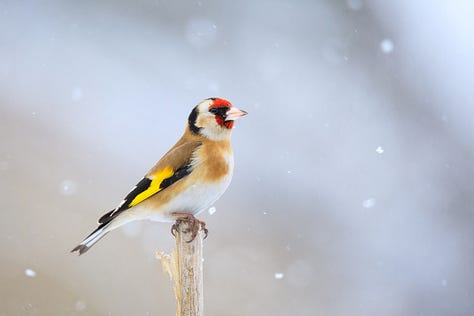
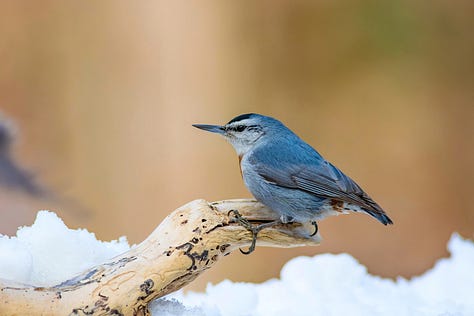
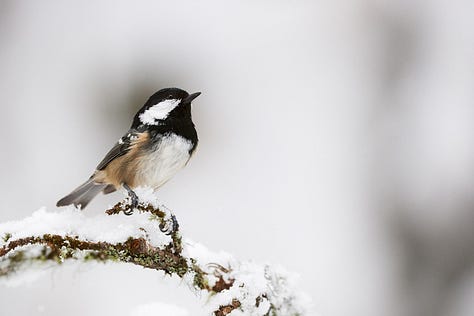
The sound of these birds’ English names captures their colourful liveliness in a permanent summer, while the binomial nomeclature assigns them the impersonal dignity of science, the worthiness of catalogue. It preserves them in kind, rather than individuality, but it also preserves them against time: there is something reassuring in a name that signifies the continuous line of a species, a belonging, implicitly ‘for as long as it can last in time’, despite individual losses to predatory jaws.
Although perhaps not also despite human impact. We therefore owe them more than seeds and suet. We owe them attention and at least some of our time - if not the recognition that somewhere down the line, albeit hundreds of millions of years ago, we shared a common ancestor (check this Birdsong, Speech and Language article that explores the evolution of mind and brain. And did you know we share half of our DNA with chickens?)
There’s also a lyrical sonority to scientific naming:
Cyanistes caeruleus (blue tit)
Aegithalos caudatus (long-tailed tit)
Fringilla montifringilla (brambling)
Fringilla coelebs (chaffinch)
Prunella modularis (dunnock)
Regulus regulus (goldcrest)
Carduelis carduelis (goldfinch)
Erithacus rubecula (robin)
Spinus spinus (siskin)
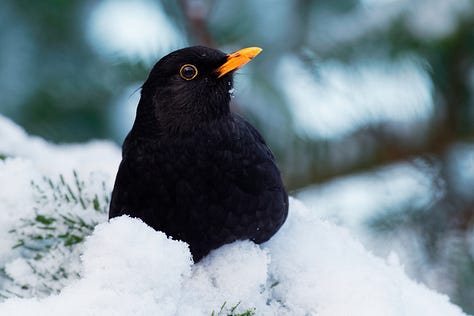
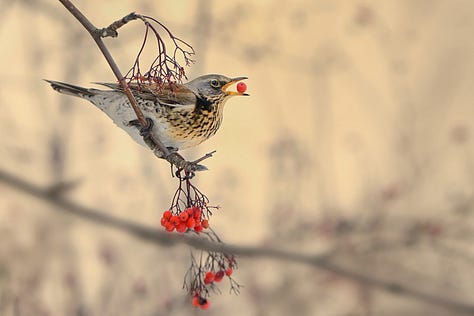
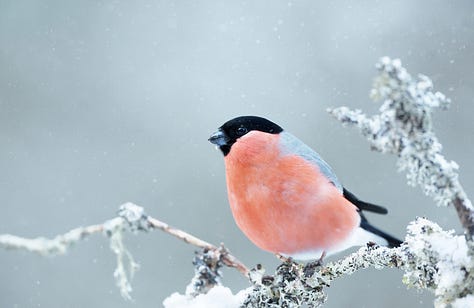
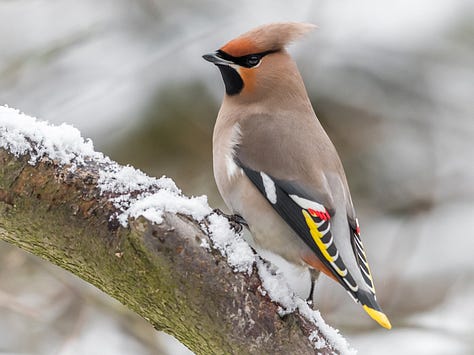
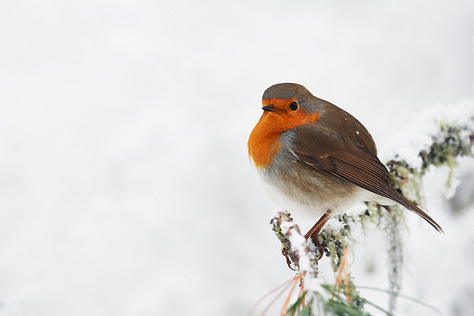
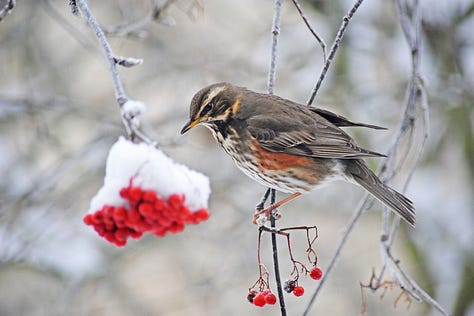
And this is where the soft labour of a -possibly returning- blue tit family, fissures the brittle day: it calls attention to the vast and omnipresent, if individually diminutive, bird population which tirelessly festoons cold air and bare branches with colours we can only truly notice at barren times of year. Times when we aren’t distracted by blossom or butterflies, foliage, a blazing sun, the cooing of woodpigeons, the hum of bumble bees or the call of a confident fox.
So I take the effect of Hardy’s lonesome birdsong as much more than a sign of hope in a colourless world: like the premature nesting of blue tits in my garden, the ecstatic caroling of his ageing thrush is a hymn to fully-fledged life, however hidden or distant yet. Because the anticipation of spring alone already propels thoughts of summer. It is a joy of sorts.
The Darkling Thrush
I leant upon a coppice gate
When Frost was spectre-grey,
And Winter's dregs made desolate
The weakening eye of day.
The tangled bine-stems scored the sky
Like strings of broken lyres,
And all mankind that haunted nigh
Had sought their household fires.
The land's sharp features seemed to be
The Century's corpse outleant,
His crypt the cloudy canopy,
The wind his death-lament.
The ancient pulse of germ and birth
Was shrunken hard and dry,
And every spirit upon earth
Seemed fervourless as I.
At once a voice arose among
The bleak twigs overhead
In a full-hearted evensong
Of joy illimited;
An aged thrush, frail, gaunt, and small,
In blast-beruffled plume,
Had chosen thus to fling his soul
Upon the growing gloom.
So little cause for carolings
Of such ecstatic sound
Was written on terrestrial things
Afar or nigh around,
That I could think there trembled through
His happy good-night air
Some blessed Hope, whereof he knew
And I was unaware. by Thomas Hardy (1840-1928)Find out more:
Birdsong in Winter as 'temperature gauge' - The Guardian
How Listening to Birdsong Can Transform Our Mental Health
‘Snow miracle’' painting references:
Masolino and Masaccio, 1482 The Blessed Virgin Mary Overlooking Pope Liberius as he Scraped the Basilica’s Foundation in the Snow (The Miracle of the Snow), 1428, Galleria Nazionale di Capodimonte, Naples.
Perugino (c.1450-1523, attributed to), The Miracle of the Founding of Santa Maria Maggiore with a Fall of Snow (5 August 352) (predella panel), National Trust
Bird photography reference:
https://blog.happybeaks.co.uk/wild-birds/15-garden-birds-to-spot-this-winter/



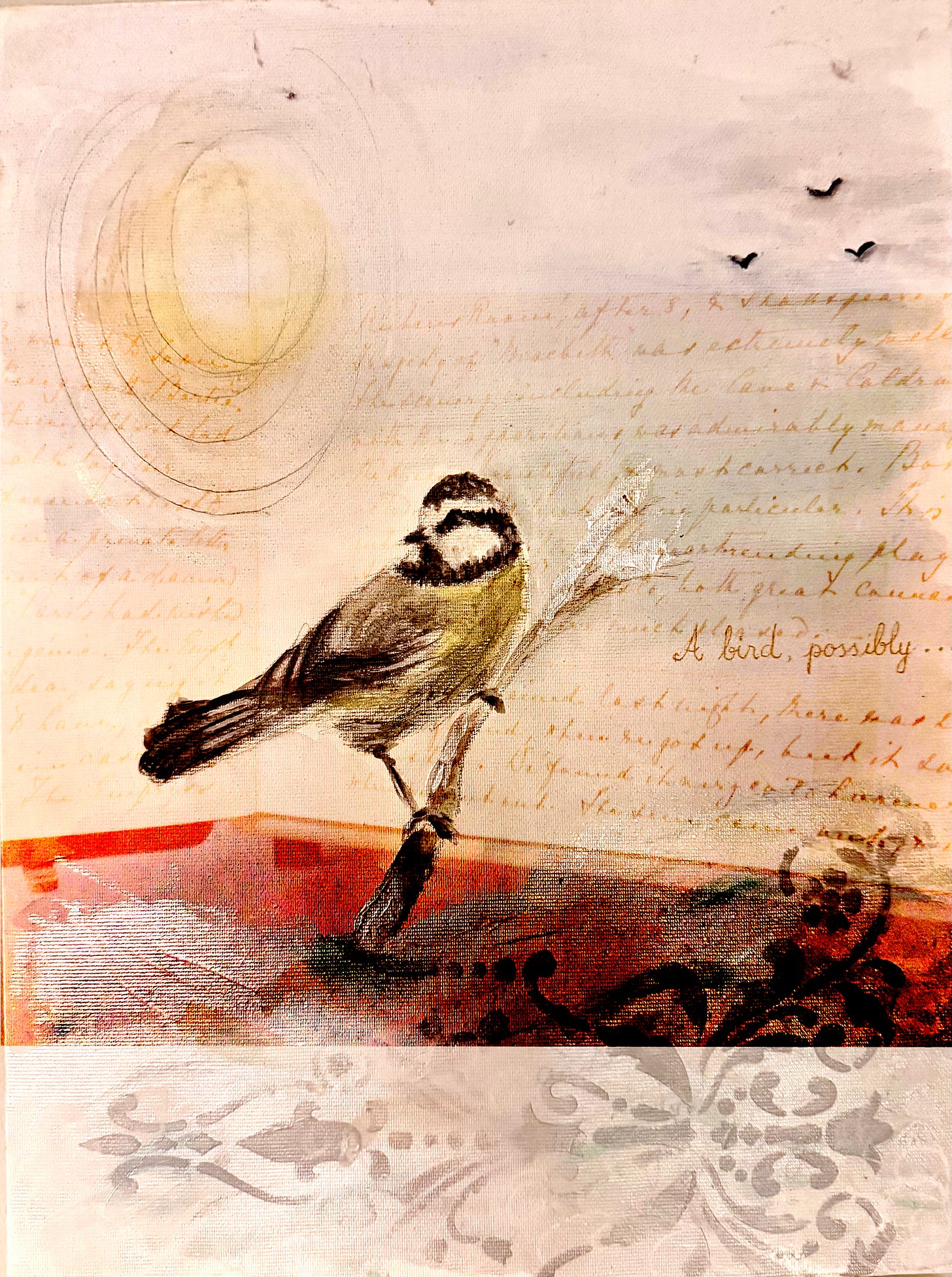
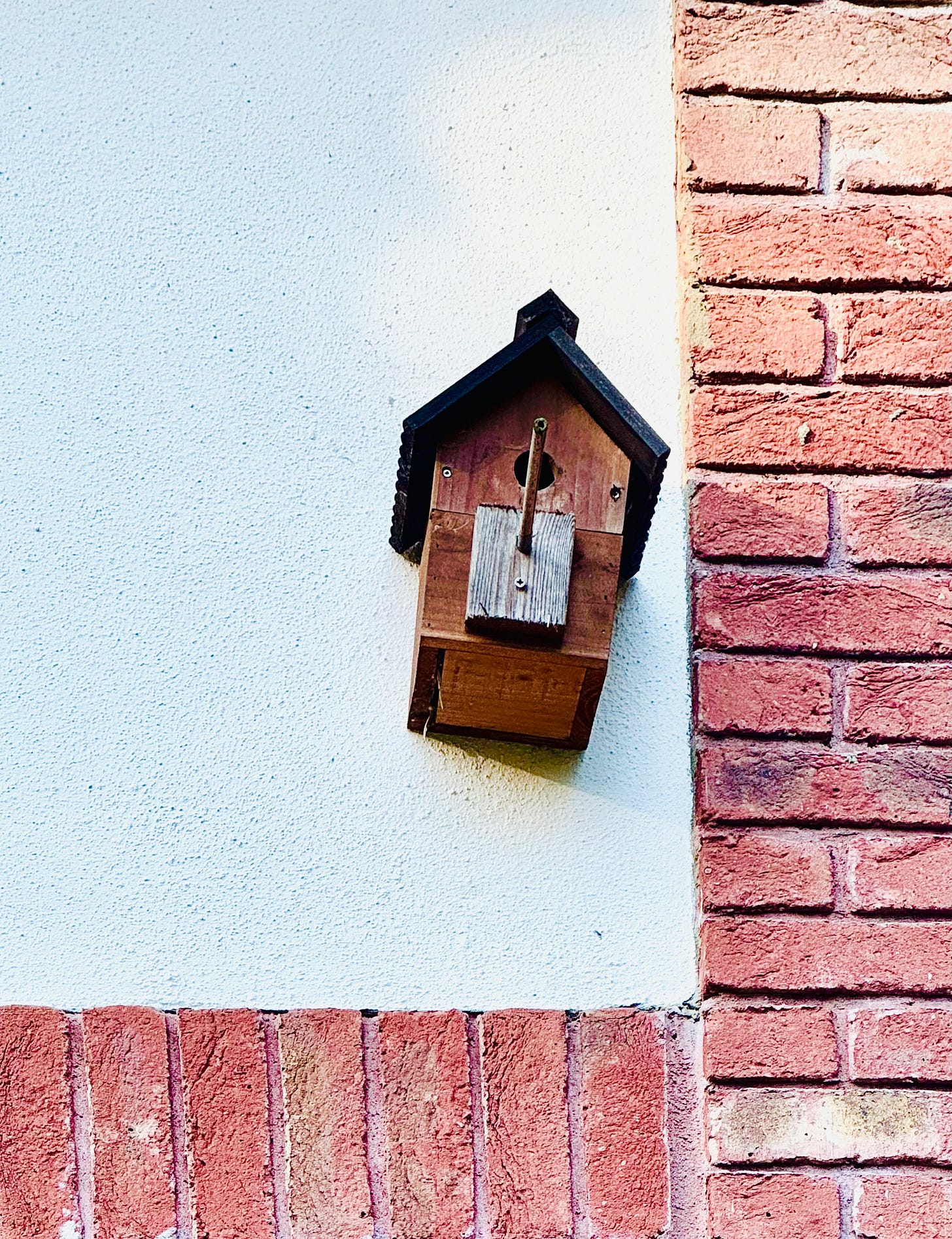
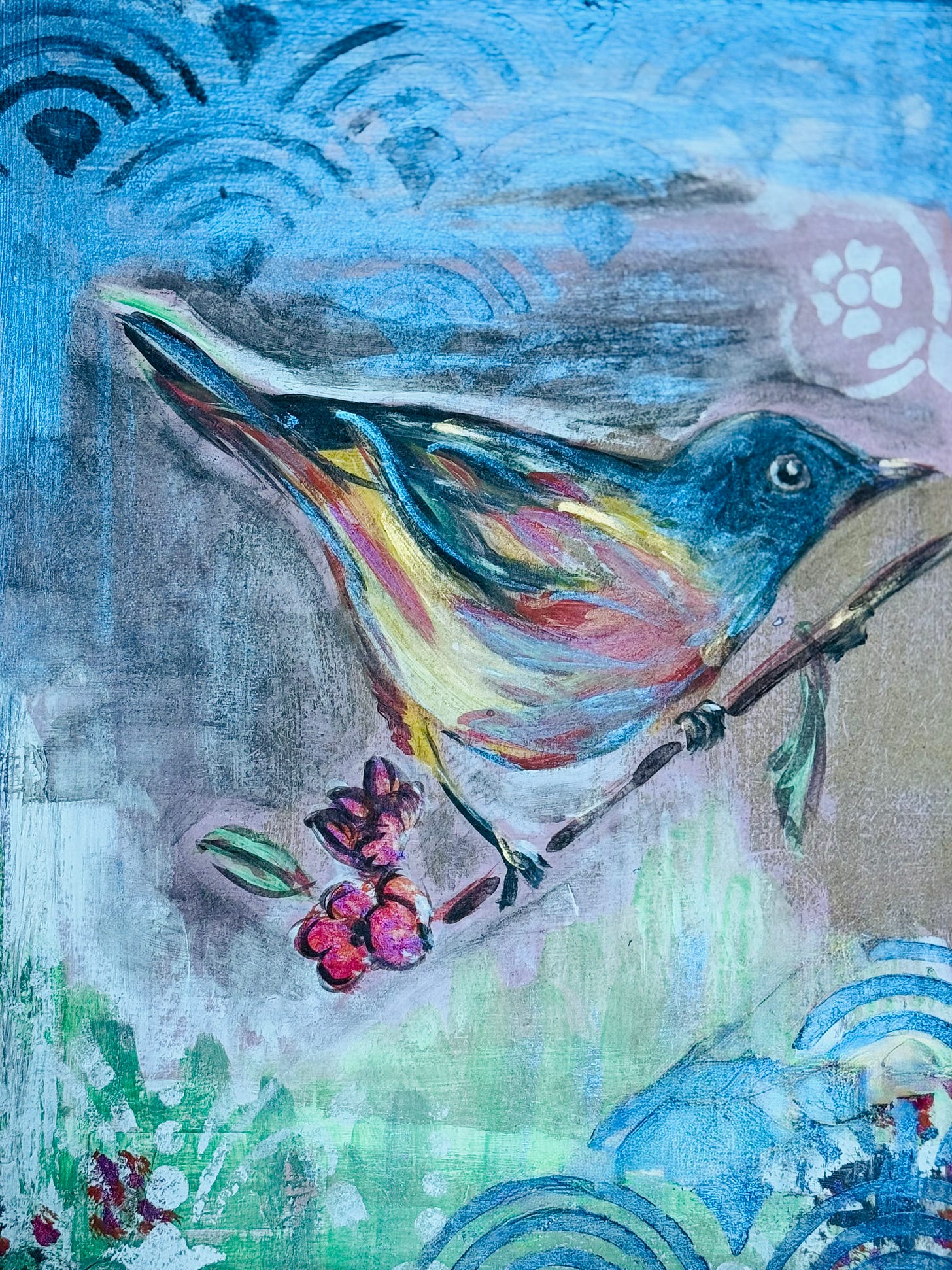
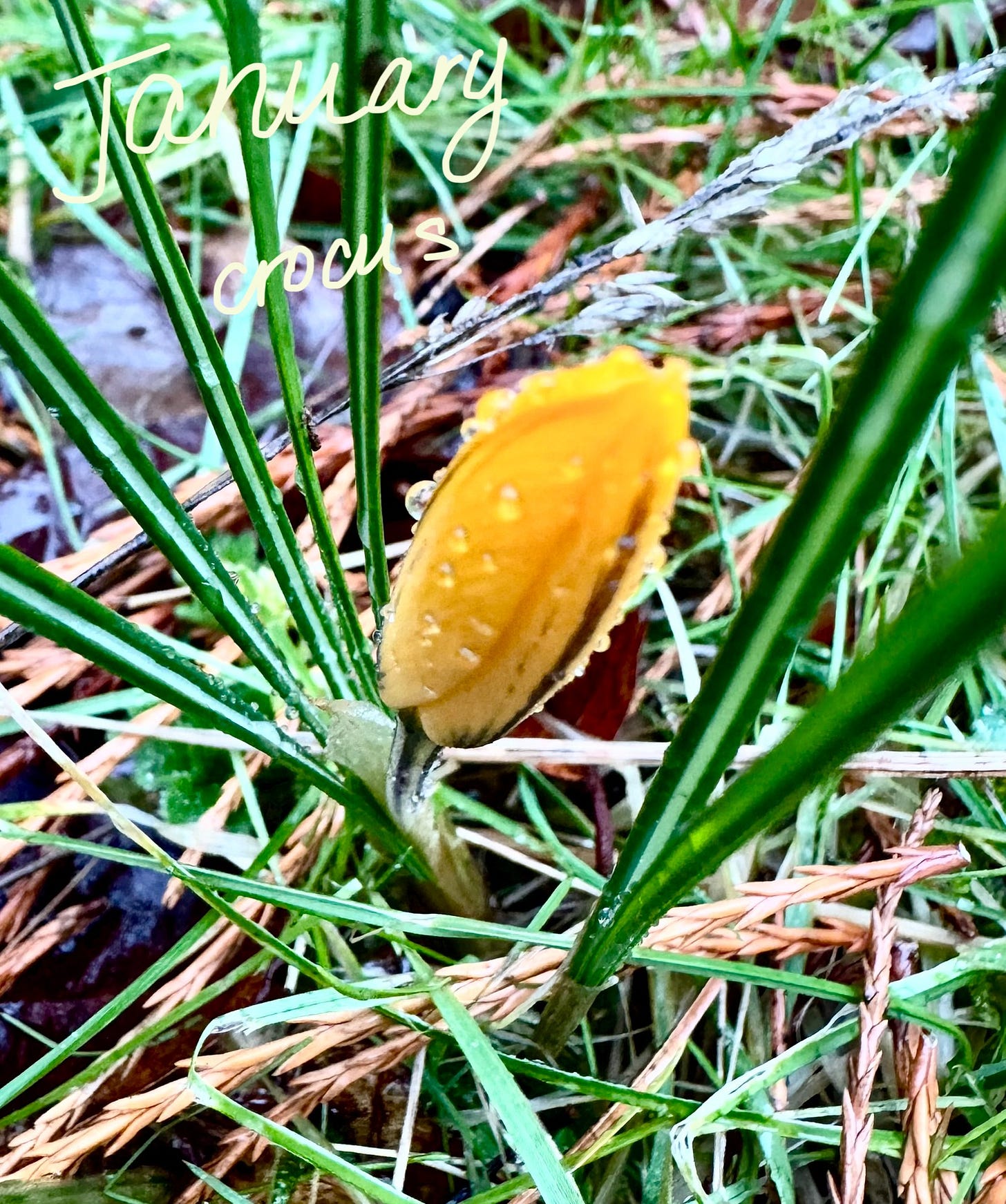
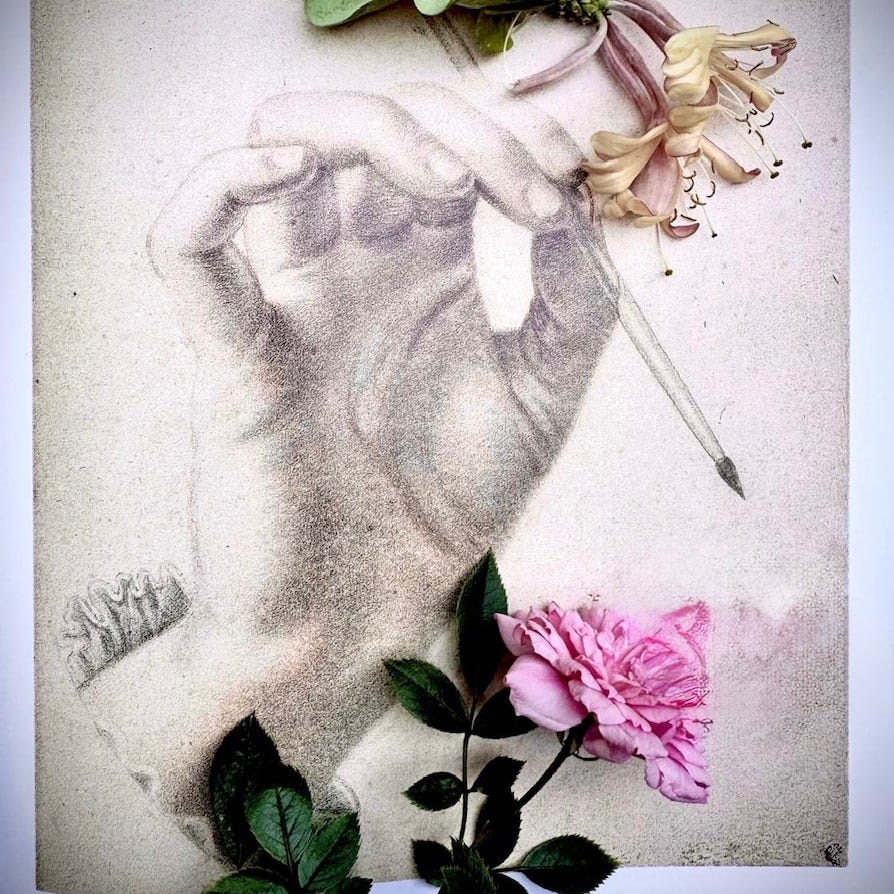
This was such a beautiful read! I love the incorporation of sounds, paintings, and poetry -- truly a gorgeous look at birds that feels all-encompassing.
The paintings are joyful !